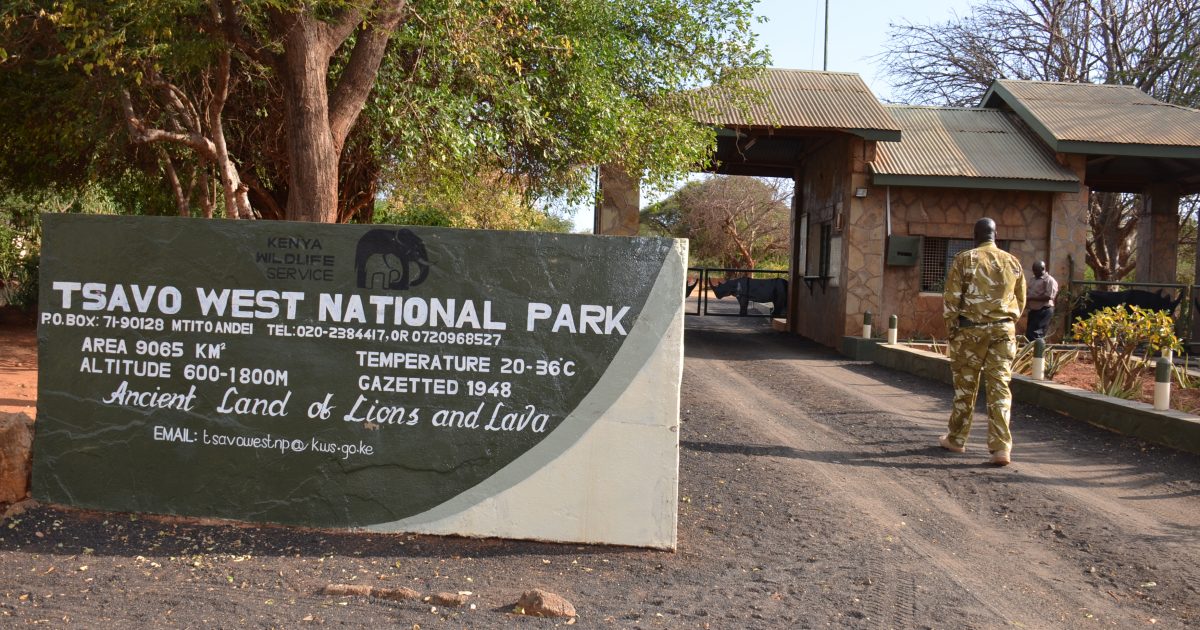For over a century, the iconic Tsavo National Park has been a haven for thousands of rare wildlife and plant species. Globally renowned for breathtaking sceneries and magnificent landscape characterized by rolling plains, towering hills and vast open spaces, the Tsavo complex ecosystem, a fountain of sustenance for wildlife, has stimulated flourish and thrive.
However, the nearing completion of a framework with guidelines for sustainable exploitation of minerals in this vast protected area will see Tsavo not only supporting wildlife but also becoming a key source of livelihoods for thousands of artisanal miners in Taita-Taveta County and beyond.
Local artisanal miners consider the government’s decision to allow for controlled mining activities in Tsavo Park as a giant leap in practical implementation of empowerment programs whose potential to transform lives for miners is assured.
Mr. David Zowe, the County chair for Artisanal Miners in Taita-Taveta, confirms that artisanal miners are beside themselves with elation that their long-cherished dream of accessing Tsavo to exploit the legendary mineral resource is on the verge of becoming a reality.
“As artisanal miners, we are overly delighted. The government is acting on our requests to be allowed to mine inside the park. We feel policy makers have realized the potential portended by such decisions towards the empowerment of the economically vulnerable in our rural areas,” he says.
His delight is shared by thousands of impoverished artisanal miners. Tsavo National Park, a heavily-protected conservation fortress, is 22,000-square kilometers of vast sprawling universe marked by towering hills, sprawling bushes and deep valleys and dedicated exclusively for conservation activities.
As a protected area, it is home to Kenya’s largest elephant population. The National Wildlife Census Report of 2021 says Kenya has an estimated elephant population of 36,280. Out of this, Tsavo Ecosystem alone holds more than 37 percent, translating to over 13, 500 jumbos.
Access to Tsavo Palk has always been a strictly controlled activity with tour drivers instructed to adhere strictly to park protocols. Non-authorized persons caught within Tsavo boundaries including illegal grazers are promptly apprehended for trespass. Such stringent measures aim to keep the visitors safe, maintain the park’s integrity and shield endemic wildlife species from potential poachers.
Even the businesses like lodges and camps operating in Tsavo risk having their operational licenses revoked if they fail to adhere to the conservation-oriented strategies that support non-interference with the delicate and vibrant biodiversity.
The proposal for controlled mining operations in Tsavo National Park by artisanal miners is therefore viewed as a futuristic model of economic governance that seamlessly blends wealth-creation initiatives with conservation programs for protected areas.
The decision also forms a basis for a major tectonic shift in implementation of economic policies in Kenya that prioritizes inclusivity in development through an equilibrium that speaks to ideals of environmental protection while promoting economic programs to benefit impoverished masses bordering protected areas.
The Principal Secretary for Mining Elijah Mwangi says the development of a framework with guidelines on how artisanal miners can derive benefits from mineral resources in protected areas is informed by the need to empower the most vulnerable of miners.
The constitution, he adds, grants ownership of minerals to Kenyans. This is the foundation of enactment of policies and implementation of programs that allow optimal exploitation of minerals.
“We want artisanal miners to improve their livelihoods. The framework will guide on mining modalities while protecting the environment. Miners in marketing cooperatives are the target for proper coordination and planning,” he says.
Leaders say allowing mining in Tsavo is set to address decades-old challenges characterized by public discontentment as disgruntled miners and local communities accuse the government of ignoring artisanal miners’ plight. With this new dawn, the state is set redeem its past image of an intransigent regime; one that was impervious to the suffering of its most lowly
‘It is a redemptive moment for the government. Because we don’t manage Tsavo park, we want programs that allow our people to benefit from resources in the park,” says Taita-Taveta Senator, Jones Mwaruma.
While there has been jitters over the impacts of mining in the park with concerns citing displacement of endemic species, disruption of wildlife patterns and defacing of landscape, conservationists have backed the initiative stating that mining and conservation are compatible.
Mr. Jim Nyamu, a veteran conservator and Founder of Elephant Neighbor Center, argues that a framework, guidelines and procedures is what has been missing to support safe mining while upholding the conservation philosophy for Tsavo national park.
“Tsavo Park is a resource that can benefit communities and governments. A framework with guidance will introduce control mechanisms to exploit minerals as well as safeguard the Tsavo ecosystem,” he says.
Nyamu says illegal mining and grazing are responsible for degradation of the park because they are not controlled and lack enforcement.
“Tsavo can support wildlife and livelihoods too. The control and monitoring system will ensure mining does not adversely impact the environment,” he says.
By Wagema Mwangi





